
Recognizing Plant Physiology authors: André Vidal Meireles
Plant Physiology, Plant Physiology: Author ProfilesAndré Vidal Meireles, first author of Ascorbate deficiency does not limit non-photochemical quenching in Chlamydomonas reinhardtii
Current Position: Post-doctoral research associate position under Dr. Szilvia Z. Tóth at the Institute of Plant Biology of the Biological Research Centre Szeged (Hungary)
Education:…
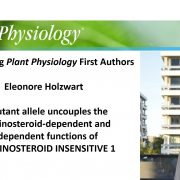
Recognizing Plant Physiology first authors: Eleonore Holzwart
Plant Physiology, Plant Physiology: Author ProfilesEleonore Holzwart, first author of A mutant allele uncouples the brassinosteroid-dependent and independent functions of BRASSINOSTEROID INSENSITIVE 1
Current Position: Post-Doc, Plant Development, Centre for Organismal Studies, Heidelberg University
Education: PhD (2018) in Plant Molecular Biology…
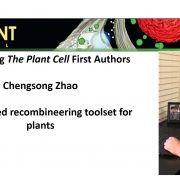
Recognizing Plant Cell first authors: Chengsong Zhao
The Plant Cell, The Plant Cell: Author ProfilesChengsong Zhao, co-first author of An improved recombineering toolset for plants
Current Position: Research Scholar in the Alonso-Stepanova laboratory, Department of Plant and Microbial Biology, Program in Genetics, North Carolina State University, Raleigh, NC, USA
Education: Ph.D. in Horticulture…
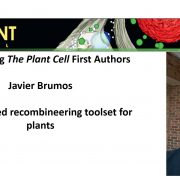
Recognizing Plant Cell first authors: Javier Brumos
The Plant Cell, The Plant Cell: Author ProfilesJavier Brumos, co-first author of An improved recombineering toolset for plants
Current Position: Research Scholar in the Alonso-Stepanova laboratory, Department of Plant and Microbial Biology, Program in Genetics, North Carolina State University, Raleigh, NC, USA
Education: Ph.D. in Biotechnology…
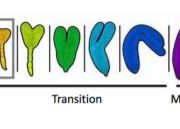
Micro Manager: MicroRNA Dynamics Facilitate Correct Embryo Morphogenesis and Patterning
Research, The Plant Cell, The Plant Cell: In BriefMicroRNAs (miRNAs) are a class of small (~21 nucleotide) non-coding RNAs that function as post-transcriptional repressors of gene expression. In plants, miRNAs recognize their target mRNAs based on perfect, or near-perfect, sequence complementarity, ultimately mediating their cleavage and/or translational…

Recognizing Plant Physiology first authors: Guido Durian
Plant Physiology, Plant Physiology: Author ProfilesGuido Durian, first author of PP2A-B′γ controls Botrytis cinerea resistance and developmental leaf senescence
Current position: Postdoctoral researcher, Molecular Plant Biology unit, University of Turku, Finland
Education: Doctor of Natural Sciences (Dr. rer. nat.); Freie Universität Berlin,…
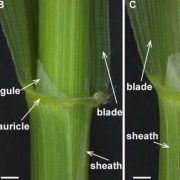
Liguleless1, a conserved gene regulating leaf angle and a target for yield improvement in wheat
Plant Physiology, Plant Physiology: News and Views, ResearchA major challenge in modern agriculture is to increase crop yield with diminishing agricultural land to feed the fast-growing global population. The erect leaf phenotype is a highly desirable trait that allows for higher planting density and maximizes light interception capacity and thus increases photosynthetic…
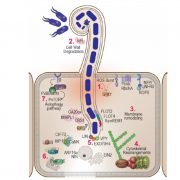
Review: Celebrating 20 years of genetic discoveries in legume nodulation and symbiotic nitrogen fixation (Plant Cell)
Plant Science Research WeeklyLegumes are important crops because they are protein-rich, as a consequence of symbiotic nitrogen fixation (SNF). In the past 20 years, through forward and reverse genetics more than 200 genes have been identified that are involved in this process, from recognition through nodule differentiation and…
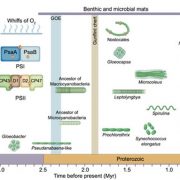
On the origin of oxygenic photosynthesis and cyanobacteria (New Phytol)
Plant Science Research WeeklyPhotosynthesis occurs in several ways, only one of which releases oxygen as a product. As oxygen-breathing organisms, we are totally dependent on oxygenic photosynthesis, which is restricted to cyanobacteria and green plant plastids. In this review, Sánchez‐Baracaldo and Cardona examine how recent…

